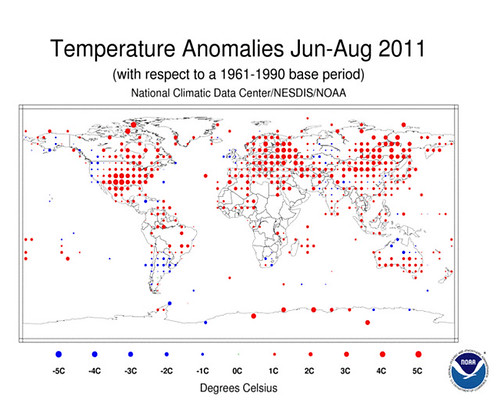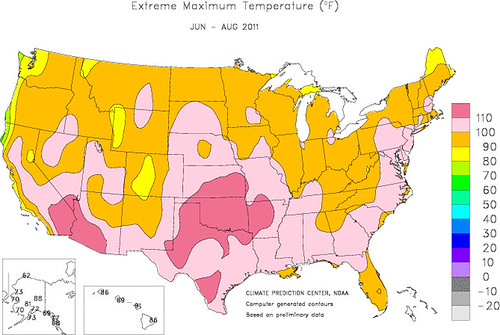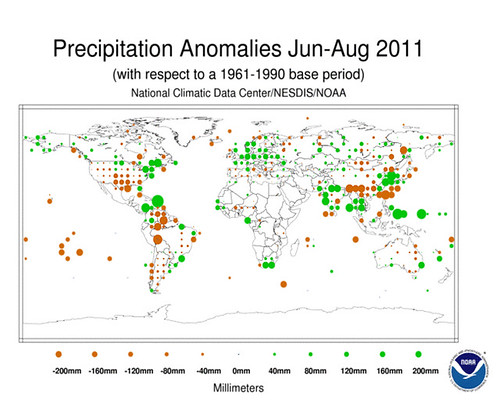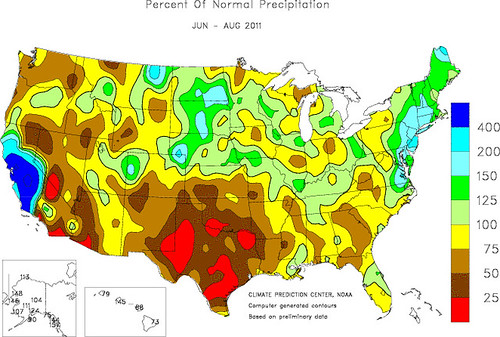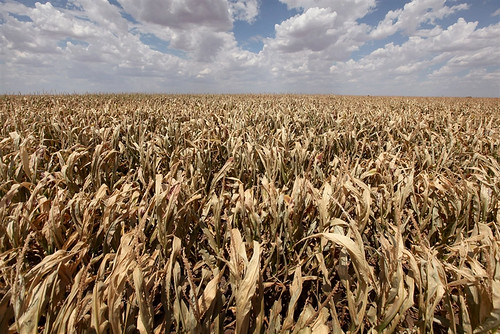I spent 4 weeks in Oklahoma from late June to late July, experiencing a fraction of the second hottest summer across a large area of the USA since records began in the late nineteenth century. The hottest summer on record (by just a fraction over 2011) was the year of the Dust Bowl (1936) a la Grapes of Wrath.
During the later part of my time there, the heat spread northwards so that on 22 July, maxima between 100 and 108 F ranged from Virginia to Maine in the far north-east. Twentyfive heat-related deaths occurred across the Mid-West and North-East of the country. Not surprisingly, air-conditioning demand soared for a long period and, even with the threat of prosecution, many inhabitants of Norman, Oklahoma still watered their lawns (during the day too!) every day when their was an odd/even day watering restriction ‘enforced’.
Oklahoma is naturally quite arid, part of the ‘Great American Desert’ described by those who mapped the West in the early nineteenth century.
Dallas/Fort Worth airport experienced 70 consecutive days with maxima at or above 100F (38C) by mid September. Not surprisingly, the whole region of the southern High Plains suffered an associated drought with very serious water shortages. There is a suggestion that the preceding La Nina may have favoured the evolution of these severe conditions that were exacerbated by the feedback of dry ground enhancing the sensible heating of the air.
I drove across Oklahoma to Arkansas and saw the huge area of corn fields that should have looked green and lush looking a dessicated yellow-brown. Agriculture sufferd very badly – both crops and livestock.
All in all it was a summer to remember – not like the UK’s. I saw rain for a total of 15 minutes during my 4 weeks stay.
